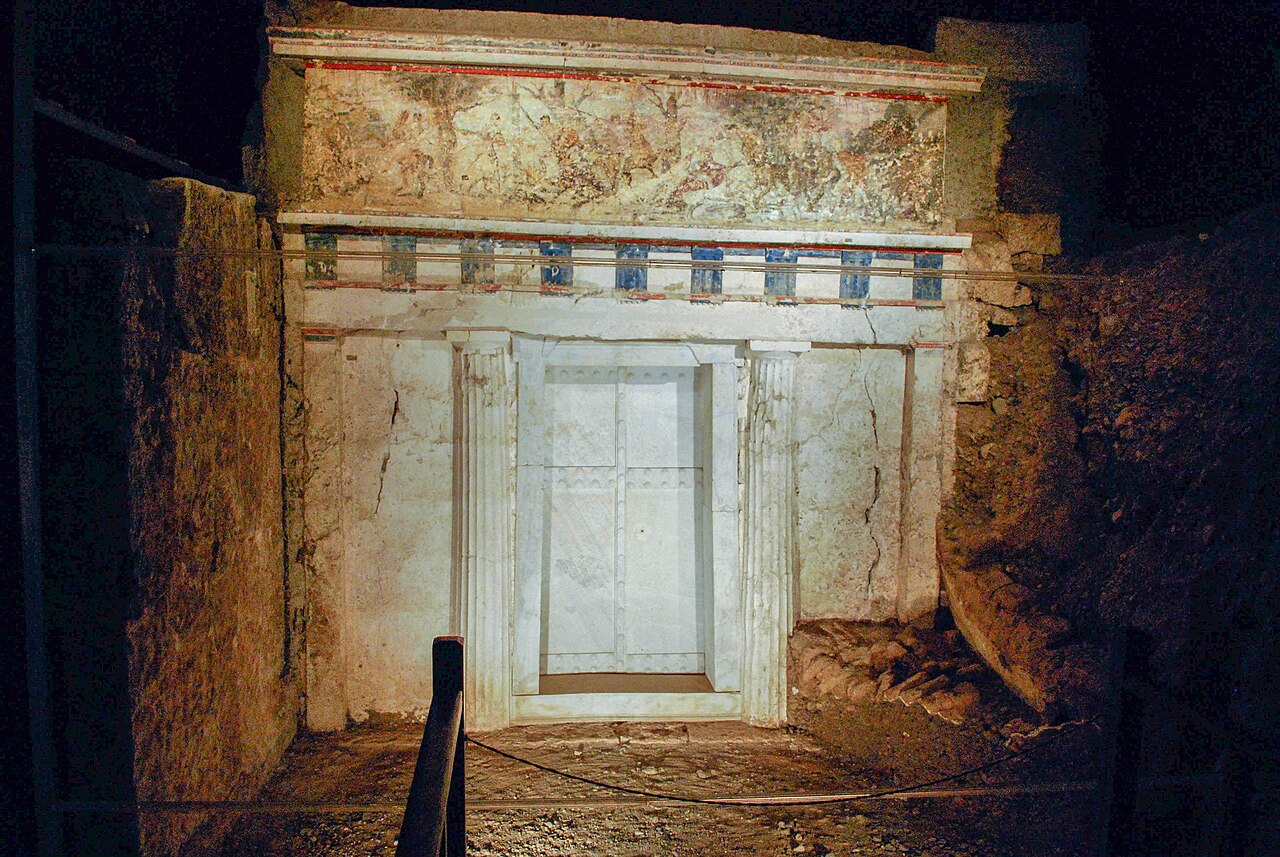
A Greek expert refuted the claim made recently that the tomb of Alexander the Great is most likely in Vergina, Greece.
The claim was made by world-renowned University of Sorbonne historian Helen Glykatzi-Ahrweiler.
However, the head of the Ephorate of Antiquities of Imathia, Angeliki Kottaridis dismissed Glykatzi-Ahrweiler’s theory that the person buried in Vergina is Alexander and not his father Philip II of Macedonia.
Speaking to ERT3 regarding the claim about the tomb found in the 70s by Manolis Andronikos, Kottaridis said the evidence suggests otherwise.
Kottaridis noted that the remains in the tomb are of a man in his 40s, which rules out Alexander the Great, who died at the age of 33.
“We have a tomb with a dead man in the chamber and a woman in the vestibule. The bones are there, we’ve known them since 1977, and they’ve been studied many times by anthropologists. What you can easily determine from the study of the bones is the age and gender of the deceased,” she stressed.
The theory that the tomb of Alexander the Great is in Vergina
Explaining the theory that Alexander’s tomb is in Vergina, Helen Glykatzi-Ahrweiler pointed to details decorating the tomb.
A hunting depiction is found on the pediment, with Alexander the Great in the middle.
In the deathbed, the images of a Satyr, a male deity, and Greek god Dionysus are found.
For the connection to the Satyr, Ahrweiler relates the story conquering of the Phoenician capital Tyre. of Alexander. During his extensive campaigns, Alexander encountered formidable resistance when he arrived in Tyre.
In a moment of doubt, Alexander, according to legend, dreamed of a satyr. As an Aristotelian, he saw this as an omen – a play on words in ancient Greek where “Sa-Tyros” sounded like “Tyros is yours.” This encouraged Alexander to stay and successfully capture Tyre.
In the context of Alexander’s life, the significance of the Greek god Dionysus and satyr imagery is profound, Glykatzi-Ahrweiler argued.
Dionysus was not only a wine deity, but also a symbol of the divide between civilization and the wild, embodying the spirit of conquest and change. The satyr, who was frequently associated with Dionysus, represented unbridled nature and freedom.
These images on the tomb may represent Alexander’s dual nature as a civilizer and a conqueror, as a man who straddled the known and unknown worlds.
Therefore, according to Ahrweiler, the two images of a Satyr and Dionysus discovered in the Macedonian tomb are more related to Alexander’s story than to King Philip’s.
The location of Alexander the Great’s tomb remains a mystery
The exact location of Alexander the Great’s tomb remains one of the enduring mysteries of history. Following his death in Babylon in 323 BC, his body was initially buried in Memphis by his general Ptolemy I Soter.
However, in the late 4th or early 3rd century BC, during the early Ptolemaic dynasty, his body was transferred to Alexandria, Egypt, where it was placed in the Serapeum complex, built by Pharaoh Nectanbo II.
There have been numerous attempts to locate Alexander’s tomb, but none have been conclusive. In 2014, a large Alexander-era tomb was discovered at Kasta Tomb in Amphipolis, Greece.
Some have speculated that it was built for Alexander but not used due to Ptolemy I Soter having seized the funeral cortege. However, the excavation team argued that the tomb was a memorial dedicated to Alexander’s friend Hephaestion.
In 2021, Egyptian officials claimed to have found Alexander the Great’s tomb in Siwa Oasis, an urban area near the Libyan border with Egypt. However, the discovery was met with skepticism from many archaeologists, who questioned the evidence presented by the Egyptian authorities.
More recently, in 2023, Greek archaeologist Calliope Limneos-Papakosta claimed to have found Alexander’s tomb in Alexandria. She based her claim on the discovery of a marble statue claimed to be of Alexander in the Shallalat Gardens, which occupy the ancient royal quarter in Alexandria. However, her findings have not yet been independently verified.
See all the latest news from Greece and the world at Greekreporter.com. Contact our newsroom to report an update or send your story, photos and videos. Follow GR on Google News and subscribe here to our daily email!



